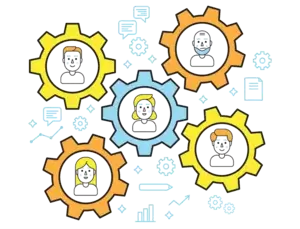Leveraging Business Intelligence for Smarter Hiring Decisions
Optimizing Recruitment Strategies with Data-Driven Insights
Enhancing Hiring Practices: The Role of Business Intelligence
Is it possible to predict how successful a candidate can be for the company? How do we know if the candidate is a good investment? How do we decide whether to hire someone or not? There are many similar questions that come to mind despite ensuring that the prospective candidates are skilled enough.

People are critical to a business’ success and choosing those people involves time and money investments, be it for recruiting, on-boarding, hiring and/or firing. Since people are a company’s most valuable assets, the market for top talent is always tight. BI has the potential to offer insights so organizations can hire, retain, and invest in the best.
Human Resource is just not the soft skilled department anymore, as it was before the technology revolution. Making it a data driven department (like others) and do wonders for any company.
Human Resource analytics, also called talent analytics, is applying data analytics and business analytics techniques to human resources data. The primary focus of human resources analytics is to provide the organization with a clear and transparent insight on managing employees so that business can benefit from it. Human resources analytics can be used to identify what data should be captured and how to use useful data to model and predict potentials so that the organization can get maximum return on investment on its human capital.
Understanding the Hiring Landscape: Challenges and Opportunities
The Power of Data: Transforming Recruitment with Business Intelligence
Key Benefits of Using BI in the Hiring Process
Implementing BI Solutions: Practical Tips for HR Professionals
Hiring The “Right Candidate”Business Intelligence can do wonders when it comes to hiring the right candidate for the job. Businesses can analyze data of previously hired candidates and perform an analysis to answer several questions such as; which candidates were most successful? What kind of skills did they possess when they were hired?
Among all the highest performers we can analyze the common skills and personalities traits. It can help companies while recruiting someone new as they will already have an idea of what skills to look for in candidates.
Employee Evaluation
Human Resource managers and executives rely on analytics to evaluate employee performance and potential. Apart from employee performance evaluation, human resource analytics can also help in analyzing the reason for low performance and work on it so that it is beneficial for both employees as well as the company.
Allocation of Resources
Sometimes two different resources with same skill sets and same project perform differently. There can be various reasons for that, professional as well as personal. With the application of BI in human resources, we can actually do an end to end analysis of which employee did an excellent job under which project? What were the reasons a particular employee did not perform well? And, what the company can do to improve these situations?
Once, the company is able to figure out the problem areas they can assign work that aligns well with individuals and in turn, it will improve the productivity.
Process Improvisation
HR analytics does not only deal with gathering data on employee efficiency and recruitment. Instead, it provides insights on how to leverage that data to improve the overall HR operations which evidently is the most important part of an organization. With relevant data, it is possible to make important decisions with the expectation of getting good results.
Improving Candidate Quality: BI’s Impact on Recruitment Metrics
Harnessing Data Analytics for Talent Acquisition Success
Streamlining Hiring Processes: BI Tools and Technologies
Measuring Recruitment ROI: Tracking Performance with Business Intelligence
BI tools like Tableau, Alteryx etc. have proven to revolutionize how human resources interact and benefit with their data. Many organizations have benefited from incorporating BI into their manpower procurement and development functions. Intermountain Healthcare’s story is a perfect example to quote in this scenario. Read the full story to know more about how they transformed their Human Resource data into meaningful and actionable insights


